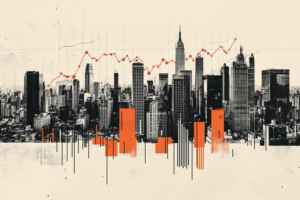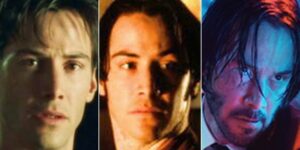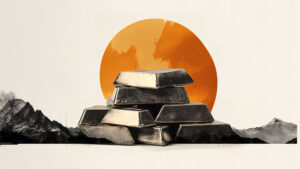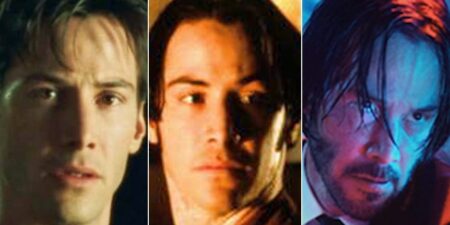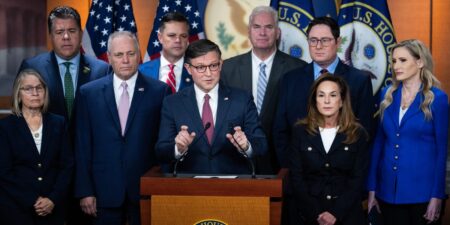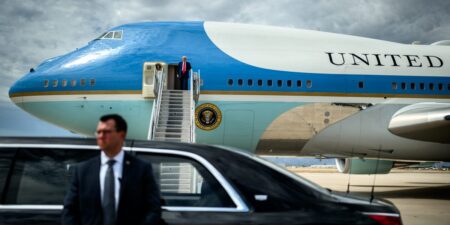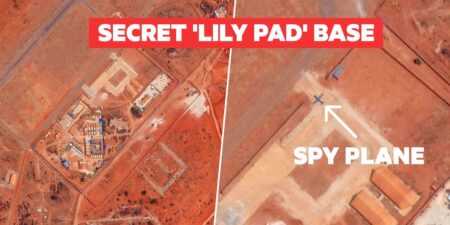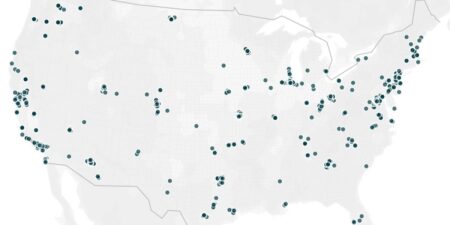X
Bluesky
Copy link
Impact Link
Save
Saved
Read in app
subscribers. Become an Insider
and start reading now.
Have an account? .
- SAM 26000 operated as Air Force One from 1962 to 1998, carrying eight US presidents.
- Lyndon Johnson was sworn in on board, and the plane transported John F. Kennedy’s body from Texas.
- SAM 26000 is housed at the National Museum of the US Air Force, where visitors can walk through it.
“If history itself had wings, it would probably be this aircraft,” Vice President Al Gore said of the SAM 26000 Air Force One plane upon its retirement in 1998.
The first Air Force jet designed and built specifically for US presidents, SAM 26000 (pronounced two six thousand) carried eight presidents between 1962 and 1998 — every leader from John F. Kennedy to Bill Clinton.
After 13,000 flying hours over 36 years of service, the plane was retired to the National Museum of the US Air Force in Dayton, Ohio, where it remains on display.
I visited the museum in August and walked through the historic aircraft. Take a look inside.
The SAM 26000 Air Force One jet, a Boeing VC-137C, was completed in 1962 for President John F. Kennedy.
The Boeing VC-137C was a customized and modified version of a civilian 707-320B airliner. It was powered by four Pratt & Whitney TF33 engines, each with 18,000 pounds of thrust.
First lady Jacqueline Kennedy chose the plane’s blue and white paint colors in coordination with industrial designer Raymond Loewy.
The first lady also added the words “United States of America” to the aircraft to signal its importance as the president’s plane.
In a tragic period of American history, SAM 26000 transported President John F. Kennedy’s body home after his assassination in 1963.
President Lyndon Johnson was sworn in as president aboard the plane hours after Kennedy was pronounced dead.
Now an interactive museum artifact, visitors can board the plane the same way US presidents did via a staircase leading into the cabin.
Admission to the National Museum of the US Air Force is free.
SAM 26000 is located in the museum’s William E. Boeing Presidential Gallery, which includes other presidential planes such as the Douglas VC-54C, the first presidential aircraft, which was known as the “Sacred Cow.”
The first stop on my self-guided tour was the cockpit, which featured a four-person crew.
The crew consisted of a pilot, copilot, navigator, and flight engineer. The navigator and flight engineer roles were eventually replaced by GPS and computerized technology on later Air Force One planes.
Two phones were located behind the flight deck.
A plaque above the phones read, “This telephone is subject to monitoring at all times. Use of this telephone constitutes consent to monitoring.”
An equipment storage space featured a first aid kit and firearms.
The closet also had a rack to hang suits and coats.
Next, I walked by the plane’s communication facility.
The secure communication center allowed presidents to place calls anywhere in the world while in flight.
Meals were prepared in the galley.
The galley included a stovetop, oven, and sink.
This seating area was used by presidential staff, members of the press, and Secret Service agents.
The aircraft could hold up to 40 passengers.
The seating area, like many areas of the plane, is now protected by plastic barricades.
I noticed fox decals above the seats, which a museum volunteer told me was a nod to the 89th Airlift Wing, which operates Air Force One.
Stationed at Joint Base Andrews in Maryland, the 89th Airlift Wing is tasked with flying the president and high-ranking government officials. The group is also referred to as “SAM FOX,” which stands for “Special Air Missions Foreign.”
The presidential stateroom was located down a long hallway.
The benches in the hallway were hollow to offer additional storage.
The president’s spacious quarters featured a desk, couch, television, and private bathroom.
In 1969, Nixon redesigned Air Force One and moved the presidential quarters over the wings, which was the quietest and smoothest part of the plane during flight.
The stateroom came with two phones, each with different purposes.
Presidents used the white phone to communicate with crew members and other passengers on the plane, while the beige phone could be used to call anywhere in the world.
Behind the presidential stateroom, a conference room provided more meeting space.
The room was furnished with throne chairs, a folding table, and another TV.
Additional conference areas provided more seating for staff, Secret Service members, and VIPs.
Presidents Nixon, Ford, and Carter sat here while flying to attend Egyptian President Anwar El-Sadat’s funeral in 1981.
An office area across the aisle featured an electric typewriter, scanner, and more phones.
Presidents used the electric typewriter to write and edit speeches while on board the plane.
The wall of the office space was decorated with a map of the United States.
President Lyndon Johnson was sworn in as president in this area of Air Force One’s cabin after Kennedy’s assassination in 1963.
Kennedy was assassinated on November 22, 1963, while visiting Dallas. He was pronounced dead at Parkland Memorial Hospital at 1 p.m., and Johnson took the oath of office at 2:38 p.m.
Jacqueline Kennedy’s pink suit was still smeared with blood when Federal Judge Sarah T. Hughes administered the oath of office on Air Force One. Johnson’s wife, Lady Bird Johnson, stood to his right.
Standing in the very spot where Johnson was sworn in after Kennedy’s assassination was awe-inspiring.
Even blocked off by plastic barricades, the plane’s cabin preserves a pivotal moment in US history.
These four seats toward the back of the plane were removed to make room for Kennedy’s coffin on the flight from Dallas back to Washington, DC, in 1963.
The Secret Service had to break the handles off the casket to make it fit through the plane door.
Air Force security personnel operated out of this area at the back of the aircraft to secure the plane while it was on the ground.
The seating area featured six seats, a phone, and a folding table.
My tour ended at the back of the plane with a view of its call sign on the tail and an American flag.
According to US Flag Code, an American flag decal must always be positioned so that the stars face forward.
Air Force One remains an instantly recognizable symbol of US might, making my walkthrough tour a memorable experience.
Like many modes of presidential transportation, such as the bulletproof limousine known as “The Beast” and the Marine One helicopter, Air Force One is about more than simply getting the president from point A to point B. It symbolizes the power of the United States and its elected leader wherever it goes.
The image projected by presidential planes remains of great interest to President Donald Trump, who opted to accept a luxurious Boeing 747-8 jet from the Qatari royal family instead of waiting for Boeing to deliver its long-delayed new Air Force One jets.
Read the full article here


